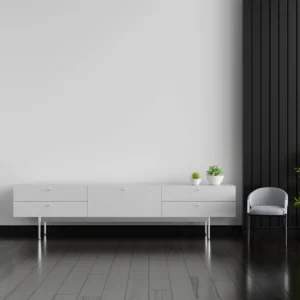
How do you cut something out in paint?

Do you want to make sure your paint job is clean and precise? Everything you need to know about painting edging, or “cutting in,” is included in our guide. This fundamental method is one of the greatest ways to accomplish expert results on any decorating project, whether you’re painting inside trim, walls, or ceilings. Discover essential tools for cutting in paint while painting here, as well as our best advice for doing so.Do you want to make sure your paint job is clean and precise? Everything you need to know about painting edging, or “cutting in,” is included in our guide. This fundamental method is one of the greatest ways to accomplish expert results on any decorating project, whether you’re painting inside trim, walls, or ceilings. Discover essential tools for cutting in paint while painting here, as well as our best advice for doing so.
The top cutting-in paint instruments

Because of their accuracy and range of sizes, brushes are essential for cutting. The best cut-in brush for painting, according to 62.75% of 102 specialists in the construction and real estate sectors surveyed, is an angled brush.Because of their accuracy and range of sizes, brushes are essential for cutting. The best cut-in brush for painting, according to 62.75% of 102 specialists in the construction and real estate sectors surveyed, is an angled brush.
The finest method for cutting in paint, step-by-stepThe finest method for cutting in paint, step-by-step

You can choose the best method for the surface you’re painting by using either of the two methods for cutting in paint: with or without tape. Choose your favorite cutting-in approach by going through the instructions for each one below.
Using tape to cut in
Do you want your paint job to always have a clean edge? The best approach to getting a clean edge, according to 25% of study participants, is to cut in with masking tape. Additionally, it shields interior trim such as switches, sockets, doorframes, and skirting. To learn more, take these actions:
- To ensure a clean cut, apply masking tape to the portions you don’t want to paint, making sure to precisely align them with any edges.
- To guarantee a uniform color and consistency, open your paint and mix it around.
- 15% of survey participants stated that correctly loading the brush ensures better outcomes. Dip your brush in and remove any excess paint. If there is too little paint, it will drag, but if there is too much, it may spill or bubble.
- The area surrounding the masking tape should be painted. This is the whole purpose of the tape, so don’t worry if you get paint on it!
- Before the paint dries, remove the tape as soon as you’re done painting, or else it might peel off in other places.
Without using tape, cutting in
You don’t need tape if you’re comfortable cutting in. You should keep at least one size of an angled or cutting-in brush available since they provide the most precision. Keep in mind that this method calls for greater care and accuracy than cutting in with tape, and 20% of those who responded to our study emphasized the value of patience and a steady hand when cutting in, so don’t rush!
To cut your paintwork, use the following procedure after obtaining the necessary equipment:
- To guarantee a uniform color and finish, open your paint can and stir it before starting.
- Using your brush, pick up a tiny bit of paint and scrape off any extra on the can’s edge.
- The longest side of the brush tip should go down first as you begin painting along the edge you are working on.
- You can carry on painting normally after you’ve drawn a precise line at the edge. To give you enough room to merge this part into the remainder of the paintwork later, we advise painting at least 5 to 10 cm from the edge of the skirting, socket, window, or doorframe when cutting in.
How to clip in without causing paint to bleed
Nothing will spoil a neat cutting-in job like paint bleeding. This can happen when poor-quality masking tape is used, so always choose a durable, professional-standard brand. Explore the range at Branded Paints Decorator Centre to find the best decorator’s tape.
Leigh, our store manager, and our skilled decorator Mike Kirk offer a few more pointers to assist you in accomplishing clean cutting:
If you’re color-blocking with two different shades, paint over the tape with the base color to seal it before applying the second color to the edge.
Run a damp cloth along the edge of the tape to seal it.
Only remove the tape once the paint is touch dry. Removing it too soon when the paint is still wet could cause smudging, but removing it once it’s completely dry could peel off paint from the areas where you want it.



